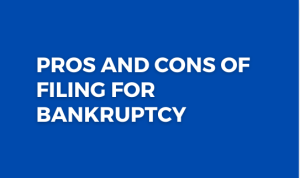The S&P 500 Index is a key measure of the U.S. stock market. It includes 500 big companies from many industries. Investing in the S&P 500 has both good and bad sides. Here are 10 advantages and 10 disadvantages, backed by facts and other sources.
Pros of Investing in the S&P 500:
- Diversification: The S&P 500 has 500 companies. This gives investors a wide range of industries. It helps reduce risks from any one company.
- Historical Performance: In the last decade, the S&P 500 has tripled investors’ money. This shows strong growth over time. barrons.com
- Liquidity: The S&P 500 is widely traded. This means investors can easily buy and sell. It’s very liquid.
- Low Expense Ratios: S&P 500 index funds have low fees. This means more of your money stays in your pocket.
- Dividend Income: Many S&P 500 companies pay dividends. This gives investors a steady income.
- Transparency: The S&P 500’s makeup is public. This lets investors know exactly what they own.
- Accessibility: Investing in the S&P 500 is easy. There are many mutual funds and ETFs that track it.
- Economic Representation: The index shows the U.S. economy. It gives a big-picture view.
- Potential for Capital Appreciation: The S&P 500 has shown big growth over time. It’s a good place for long-term gains.
- Automatic Rebalancing: The index is rebalanced regularly. This keeps it up-to-date with leading U.S. companies.
Cons of Investing in the S&P 500:
- Market Volatility: The index goes up and down with the market. This can cause short-term losses.
- Lack of International Exposure: The S&P 500 only includes U.S. companies. It misses out on international markets.
- Overexposure to Certain Sectors: The index has a lot of tech companies. This can lead to risks in those sectors.
- No Small-Cap Representation: The index doesn’t include small companies. These might offer more growth.
- Potential Overvaluation: Some stocks in the index might be too expensive. This can hurt future returns.
- Dividend Yield Variability: Dividend payments can change. This depends on company performance and the economy.
- Exposure to U.S. Economic Risks: Investing in the S&P 500 ties your money to the U.S. economy. This can be risky.
- Limited Growth from Established Companies: Big companies in the index might grow slower. Smaller companies might grow faster.
- Currency Risk for International Investors: Investors from other countries might face currency risks. This can affect their returns.
- Potential for Lower Returns During Market Corrections: In downturns, the index can drop a lot. This can hurt your portfolio.
Statistical Overview:
The table below shows the S&P 500’s annual returns over the last decade:
| Year | Annual Return (%) |
|---|---|
| 2015 | -0.73 |
| 2016 | 9.54 |
| 2017 | 19.42 |
| 2018 | -6.24 |
| 2019 | 28.88 |
| 2020 | 16.26 |
| 2021 | 26.89 |
| 2022 | -19.44 |
| 2023 | 24.23 |
| 2024 | 23.31 |
Recent Performance:
The S&P 500 Index has bounced back from tough times and hit new peaks. Yet, it’s dealing with global issues and policy doubts that make the market shaky.
External Resources:
- Center for Research in Security Prices (CRSP): Offers detailed historical stock market data.
- S&P 500 Historical Performance: Gives a full view of the index’s history and performance.
- S&P 500 Closing Milestones: Lists key moments in the index’s journey.
Conclusion:
Investing in the S&P 500 can diversify your portfolio and give you a piece of top U.S. companies. But, it’s important to think about the downsides like market ups and downs and the focus on certain sectors. It’s key to match your investments with your financial aims and how much risk you can handle.



